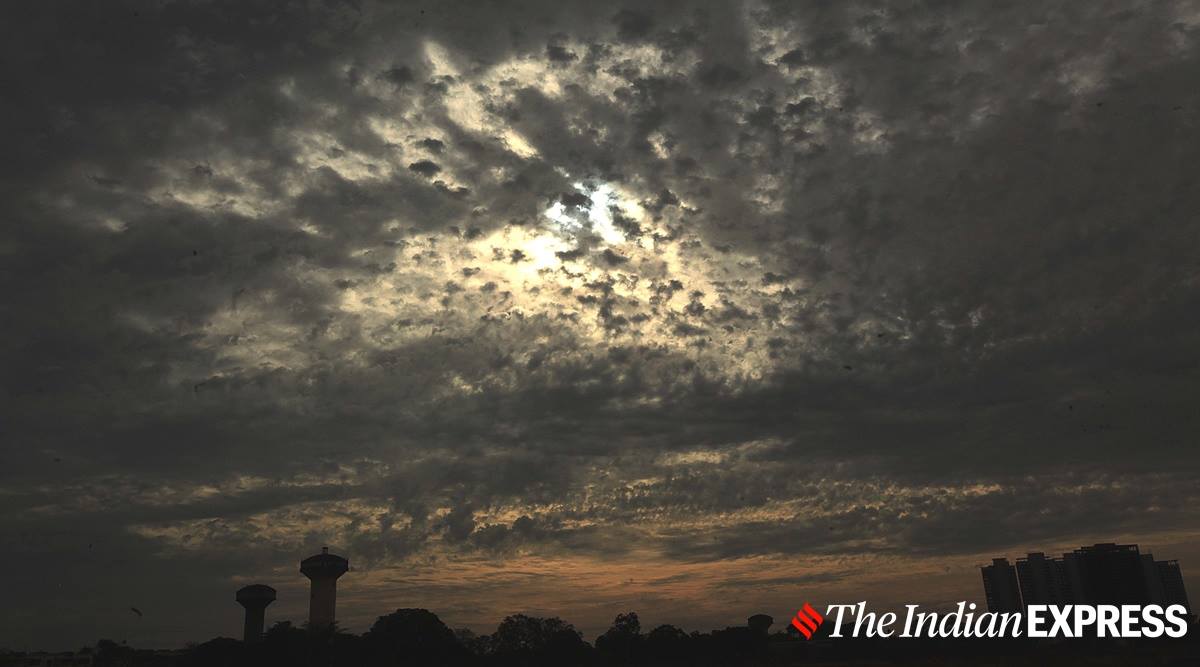 India's four-month rainfall season generally begins on June 1, with the onset of the monsoon in Kerala. The monsoon is crucial, as it provides nearly 70 per cent of the rain needed by farmers.
India's four-month rainfall season generally begins on June 1, with the onset of the monsoon in Kerala. The monsoon is crucial, as it provides nearly 70 per cent of the rain needed by farmers. PREDICTING A “normal” monsoon this year, the India Meteorological Department (IMD), in its first Long Range Forecast (LFR) on Thursday, has said that rainfall will be normal or above normal in most parts of the country, except the North-East, Haryana and Jammu and Kashmir.
IMD officials said the onset of the southwest monsoon — which accounts for about 75 per cent of the country’s annual rainfall — over Kerala remains June 1. Every year, IMD releases the long range forecast in two stages — in April and June.
“The southwest monsoon rainfall during June to September will be normal, and quantitatively, it will be 99 per cent of the Long Period Average (LPA) which is 87 cm,” said M Ravichandran, Secretary, Ministry of Earth Sciences.
This is the fourth consecutive year that the IMD is predicting normal rainfall. The seasonal rainfall is considered normal when it is 96-104 per cent of the LPA. The LPA is defined as the average of the last 50 years. Till last year, the average of the period between 1961 and 2011 was taken as the LPA. This year, in a routine revision that happens every decade, the LPA baseline has been changed to 1971-2020.
As a result, the LPA has changed from 88 cm to 87 cm. That means that during 1971-2020, the country as a whole received 87 cm of rainfall every year on an average during the four-month monsoon season between June and September.
“This is an international practice to verify the seasonal rainfall once in a decade. The decrease in the seasonal rainfall is due to the natural multidecadal epochal variability of wet and dry epochs of India’s rainfall. From the rainfall data obtained from 4,132 rain gauges across the country for the 1971-2020 period, it has been observed that the seasonal rainfall has reduced from 88 cm to 87 cm,” said IMD Director General Mrutyunjay Mohapatra.
Similarly, the all-India annual rainfall, which includes rainfall received in the entire year, not just during the monsoon months, has decreased from 117 cm to 116 cm.
According to this year’s monsoon forecast, Kerala, Tamil Nadu (except its southernmost areas), Karnataka, Andhra Pradesh, Telangana, Maharashtra, Gujarat, Madhya Pradesh, Jharkhand, Chhattisgarh, Odisha, Rajasthan (except northern areas), Uttar Pradesh, Bihar, Uttarakhand, Himachal Pradesh, Punjab and Sikkim are expected to receive normal to above normal rainfall. J&K, Haryana and the rest of the North-East are likely to receive below normal rainfall.
WITH India’s agriculture being primarily rain-fed, the southwest monsoon is vital for kharif crops. About 78 per cent of the country’s gross cropped area is supported by monsoon rainfall. Besides agriculture, the key driver of the country’s economy, India’s reservoirs and sectors like transport, aviation and power are also monsoon-dependent.
Of the annual rainfall that the country receives, about 75 per cent occurs during June to September monsoon season. July and August remain the wettest months of the year, accounting for 70 per cent of the season’s total rainfall, with June and September accounting for 15 per cent each.
The prevailing La Nina conditions will continue till at least the first half of the monsoon season. La Nina is the abnormal cooling of the sea surface temperatures observed over the equatorial Pacific region. It is known to favour the Indian monsoon.
“The land heating this year has been good and the existing La Nina conditions will favour a good monsoon,” M Rajeevan, former Secretary, Ministry of Earth Sciences, told The Indian Express.
D Sivananda Pai, Director, Institute for Climate Change Studies, Government of Kerala, noted that 2021 and 2022 remained La Nina years, but this was not unusual. There have been instances in the past — like 1974-1975, 1999-2000 and 2010-2011 — when La Nina conditions prevailed over two years.
“But one of the deciding factors for the monsoon’s performance in the second half of the season will be the prevailing La Nina,” said Pai.
The other factor is the Indian Ocean Dipole (IOD), which is likely to remain in its neutral phase till June and later turn negative, which will not be good for the monsoon, said experts.
- The Indian Express website has been rated GREEN for its credibility and trustworthiness by Newsguard, a global service that rates news sources for their journalistic standards.

